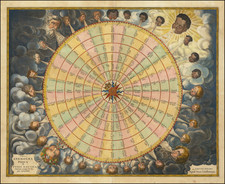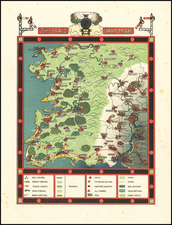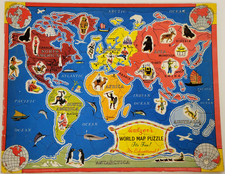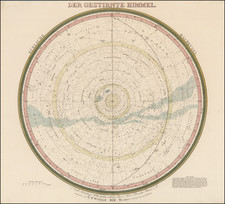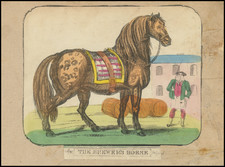The Medieval 32 Point Compass Rose
Finely engraved wind chart, surrounded by wind heads and with the compass divided into 32 parts and text in six languages.
The wind heads are arranged in successive ages from young to old, and four large heads, blowing winds on the compass and seasons.
The 32 Point Compass Rose in Medieval Navigation
The map illustrates the classical 32 point compass rose, as used in Medieval times by mariners at sea.
Arab navigators in the Red Sea and the Indian Ocean, who depended on celestial navigation, were using a 32-point sidereal compass rose before the end of the 10th century. In the northern hemisphere, the steady Pole Star (Polaris) was used for the N-S axis; the less-steady Southern Cross had to do for the southern hemisphere, as the southern pole star, Sigma Octantis, is too dim to be easily seen from Earth with the naked eye. The other thirty points on the sidereal rose were determined by the rising and setting positions of fifteen bright stars.
The western half of the rose would be the same stars in their setting position. The true position of these stars is only approximate to their theoretical equidistant rhumbs on the sidereal compass. Stars with the same declination formed a "linear constellation" or kavenga to provide direction as the night progressed.
A similar sidereal compass was used by Polynesian and Micronesian navigators in the Pacific Ocean, although different stars were used in a number of cases, clustering around the East-West axis.
The 32-point compass used for navigation in the Mediterranean by the 14th century, had increments of 111⁄4° between points. Only the eight principal winds (N, NE, E, SE, S, SW, W, NW) were given special names. The eight half-winds just combined the names of the two principal winds, e.g. Greco-Tramontana for NNE, Greco-Levante for ENE, and so on. Quarter-winds were more cumbersomely phrased, with the closest principal wind named first and the next-closest principal wind second, e.g. "Quarto di Tramontana verso Greco" (literally, "one quarter wind from North towards Northeast", i.e. North by East), and "Quarto di Greco verso Tramontana" ("one quarter wind from NE towards N", i.e. Northeast by North). Boxing the compass (naming all 32 winds) was expected of all Medieval mariners.

